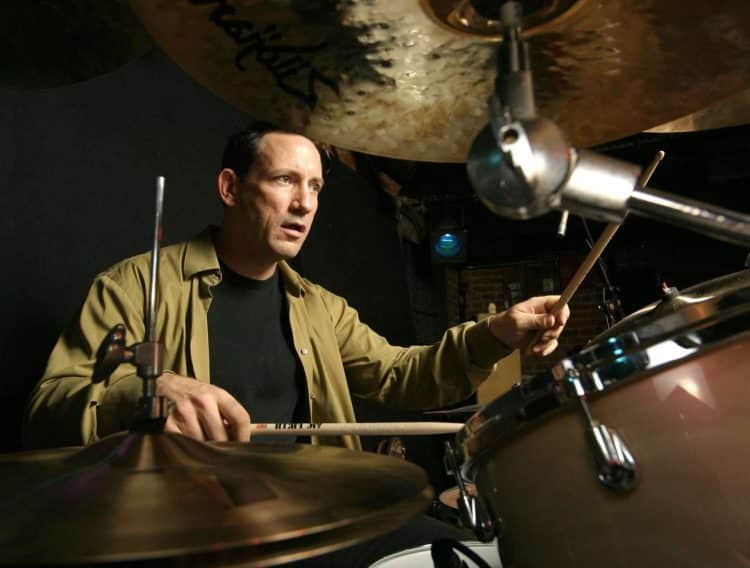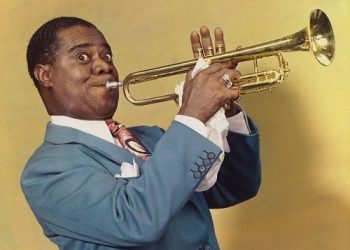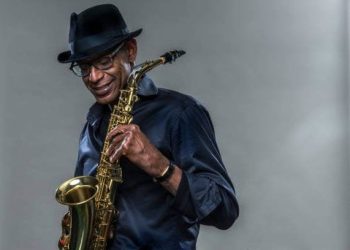Drumming is the heartbeat of music, the driving force that keeps every song alive. From thunderous fills to subtle grooves, drummers are the unsung heroes who shape the rhythm and soul of every genre. But among the countless stick-wielding virtuosos, there stands a select group whose talent, innovation, and influence have cemented them as legends. These are the drummers whose beats defined generations, whose solos left us breathless, and whose creativity transcended the boundaries of rhythm itself.
In this article, we dive into the electrifying world of percussion to celebrate the 15 best drummers of all time. From the explosive energy of rock to the intricate precision of jazz, these drummers didn’t just play music—they revolutionized it. Their iconic styles, groundbreaking techniques, and unforgettable performances have earned them a permanent place in music history. Whether you’re a die-hard fan, a budding drummer, or simply someone who loves music, prepare to be inspired as we count down the drumming legends who set the gold standard for rhythm.
So, grab your sticks (or air drumsticks!) and get ready to groove—because these 15 drummers are about to take you on a pulse-pounding journey through time and sound. Let the countdown begin!
1. John Bonham
John Bonham, famously known as “Bonzo,” redefined rock drumming with his immense power and unique sense of groove. As the drummer for Led Zeppelin, Bonham became a pivotal figure in shaping the sound of classic rock, leaving behind an indelible mark on the genre. His drumming was known for its raw intensity, yet he had an innate ability to complement the intricate textures of the band’s music. What made Bonham stand out was his ability to combine brute force with subtle musicality, creating a rhythm section that was both solid and deeply expressive. His performances were a study in the art of dynamics; tracks like “Moby Dick” and “When the Levee Breaks” are prime examples of his innovative drumming.
Bonham’s solos were legendary, with his impeccable use of triplets on the bass drum, a technique that inspired countless drummers. His groove, which seemed to effortlessly push the band forward, became the driving force behind many Zeppelin classics. His impeccable timing, particularly in songs like “Good Times Bad Times” and “Immigrant Song,” gave Zeppelin’s sound its unshakable foundation. Bonham’s approach to rhythm was so distinctive that his style is still widely emulated today. His thunderous drum fills and powerful beats elevated Led Zeppelin’s music to new heights, transforming their songs into anthems that resonated across generations. Even years after his untimely passing, Bonham’s drumming continues to inspire a wide array of drummers in rock and beyond. Simply put, John Bonham didn’t just play the drums—he made them an essential voice in rock music.
2. Neil Peart
Neil Peart, known as “The Professor” for his intellectual approach to drumming and his deep philosophical lyrics, was the heartbeat of the legendary band Rush. More than just a drummer, Peart was a master of his craft and an artist who elevated the role of percussion in rock music. His technical precision and complex time signatures were revolutionary, pushing the boundaries of what was possible behind the drum kit. Peart’s work is often lauded for its intricacy, and albums like 2112 and Moving Pictures stand as monumental examples of his genius. His ability to seamlessly blend complex rhythms with emotionally charged compositions made him an unforgettable figure in rock history.
One of the things that set Peart apart was his intricate use of polyrhythms and odd time signatures, which became a hallmark of Rush’s sound. He was a master of building tension through his drumming, taking listeners on a journey that matched the band’s sprawling, often conceptual compositions. His work on iconic songs like “Tom Sawyer” and “YYZ” showcases his ability to create tight, muscular grooves while incorporating complex fills and patterns. Beyond his technical mastery, Peart was also known for his introspective lyrics, which covered everything from personal growth to societal commentary. This blend of intellectual rigor and musical excellence cemented Peart as one of the most respected drummers in rock history. His influence extends far beyond Rush’s devoted fanbase, inspiring countless drummers across genres to think deeper about rhythm and music. Peart didn’t just change the way drumming was approached in progressive rock—he reshaped the way musicians and fans alike thought about music itself.
3. Buddy Rich
Buddy Rich was one of the most influential jazz drummers of all time, renowned for his virtuosic technique and fiery, explosive playing style. Born into a family of musicians, Rich became a child prodigy on the drums, quickly gaining recognition for his extraordinary speed and technical ability. His mastery of the instrument was apparent in every performance, from his powerful solos to his lightning-fast fills and flawless execution. Rich’s career spanned several decades, during which he became a celebrated figure in jazz and big band music, both as a bandleader and a soloist. His work with the Buddy Rich Big Band, as well as his appearances with orchestras and jazz ensembles, showcased his exceptional talent and set new standards for jazz drumming.
Rich was known for his ability to play with incredible precision while maintaining a sense of spontaneity, creating a thrilling tension between technical skill and raw emotional expression. His solos were famous for their intensity, as he incorporated complex rudiments, polyrhythms, and lightning-fast stick work that left audiences in awe. Tracks like “West Side Story” and “Bugle Call Rag” highlight his breathtaking technique and ability to make the drums sing with personality and emotion. His fearless approach to improvisation pushed the boundaries of jazz drumming, making him a pioneer in the genre. Rich’s contributions were not just about speed; he understood the subtleties of timing, touch, and texture, elevating the role of the drummer from timekeeper to integral voice in the ensemble. His legacy as one of the greatest jazz drummers ever is secure, and his impact on the world of drumming can still be felt today.
4. Keith Moon
Keith Moon, the iconic drummer of The Who, was a force of nature whose chaotic and flamboyant style made him one of the most unforgettable figures in rock music history. Moon’s playing was characterized by its wild energy and uninhibited creativity, and he was as famous for his larger-than-life personality as for his revolutionary drumming. Known as “Moon the Loon” for his eccentric behavior and explosive presence behind the kit, Moon was the heartbeat of The Who’s explosive sound, a key contributor to their dynamic live performances. His style was far from conventional; it was unpredictable, often bordering on the frenetic, but it was always brilliant and in sync with the energy of The Who.
Tracks like “My Generation” and “Won’t Get Fooled Again” showcase Moon’s ability to blend improvisation with hard-hitting rhythms, driving the band forward with an unmatched intensity. His drumming was integral to the band’s aggressive and anthemic sound, providing the foundation for their groundbreaking rock operas and live performances. What made Moon’s drumming so special was his fearlessness—he was not afraid to break the rules and approach each song with unbridled creativity. His use of fills, odd time signatures, and his ability to match Pete Townshend’s wild guitar riffs elevated The Who’s music to legendary status. Moon’s drumming was an essential part of The Who’s success, and his influence is still evident in the way modern drummers approach rhythm and live performance. His legacy as one of the most unique and influential drummers in rock history remains secure.
5. Dave Grohl
Dave Grohl’s journey to becoming one of the most iconic drummers of his generation is a testament to his versatility and passion for music. Before taking center stage as the frontman of Foo Fighters, Grohl made his mark as the powerhouse drummer for Nirvana, where his explosive drumming on Nevermind helped propel the band to worldwide success. Grohl’s drumming on tracks like “Smells Like Teen Spirit” became the soundtrack of a generation, capturing the raw energy of the grunge movement. His ability to match the intensity of Nirvana’s sound while maintaining precision and clarity behind the drum kit made him an integral part of the band’s groundbreaking success.
Grohl’s drumming is characterized by its thunderous power, precise execution, and dynamic shifts. His style blends punk, metal, and rock influences, making him one of the most versatile drummers in modern music. He wasn’t just a timekeeper; Grohl was an integral part of the band’s songwriting process, using his drumming to drive the energy and intensity of Nirvana’s music. After Nirvana’s tragic end, Grohl transitioned to lead Foo Fighters, where his drumming remained a cornerstone of the band’s sound. Tracks like “Everlong” and “Learn to Fly” showcased his technical prowess while capturing the emotional heart of Foo Fighters’ music. Dave Grohl’s contribution to rock and drumming cannot be overstated; his ability to combine raw energy with musicality has made him one of the most beloved and influential drummers of his time.
6. Ringo Starr
Ringo Starr’s contributions to The Beatles are often celebrated for their understated brilliance. As the drummer for one of the most iconic bands in history, Starr played a pivotal role in shaping the sound of The Beatles. Known for his humble yet innovative approach to drumming, Ringo prioritized the needs of the song over flashy displays of technical ability. His drumming was the perfect complement to the band’s eclectic style, providing a solid foundation while allowing the other members to shine.
On tracks like “Come Together” and “A Day in the Life,” Starr’s drumming was both creative and intuitive, playing with subtle dynamics that brought depth to the music. He was especially noted for his ability to create grooves that were simple but profoundly effective, often choosing not to overcomplicate the rhythms but instead focusing on making the song feel right. Starr’s style also included unique fills and unconventional choices, like the iconic drum pattern in “Ticket to Ride,” that have become signature sounds in popular music. His use of brushes, his soft yet steady touch, and his unflashy but highly effective approach to rhythm made him one of the most influential drummers in the history of rock.
Ringo’s impact goes beyond just his playing; his personality and ability to hold the band together during turbulent times played a crucial role in the Beatles’ success. Even after the band’s dissolution, Starr’s drumming continued to inspire future generations of drummers. Ringo’s legacy is a testament to the power of simplicity and tastefulness in music. He proved that sometimes, the most effective drumming is the one that serves the song, setting the foundation for its emotional and musical journey.
7. Phil Collins
Phil Collins is renowned not only for his remarkable drumming skills but also for his ability to infuse emotion into every beat. As a member of Genesis and a successful solo artist, Collins brought a unique, expressive style to the drum kit that resonated with millions. His drumming was both technically proficient and emotionally charged, with an ability to capture the intensity of a song’s mood and enhance its narrative.
Collins’ contribution to Genesis is legendary, with his drumming on tracks like “In the Air Tonight” standing out as one of the most iconic moments in rock music history. His famous gated drum sound, created with a distinctive production technique, became an unforgettable signature of his style and revolutionized the sound of ‘80s music. Tracks like “Mama” and “Land of Confusion” showcased Collins’ ability to incorporate complex rhythms with pop sensibilities, cementing his reputation as a drummer who could merge technical mastery with commercial appeal.
As a solo artist, Collins brought a new level of accessibility to drumming. His solo hits, like “Another Day in Paradise” and “Against All Odds,” featured drumming that was not only technically proficient but also deeply emotional. Collins’ work proved that drumming could be both powerful and subtle, blending technical skill with heartfelt expression. His influence stretches far beyond rock and pop, as his drumming style continues to inspire musicians across genres. Whether as a band member or solo artist, Phil Collins demonstrated that drumming is an art form capable of telling a powerful story.
8. Stewart Copeland
Stewart Copeland is one of the most distinctive drummers in the world of rock music, known for his eclectic style that blends elements of punk, reggae, and rock. As the drummer for The Police, Copeland helped define the band’s sound, delivering precise rhythms that were often layered with intricate textures and rich, syncopated patterns. His dynamic approach to drumming set him apart from other drummers, making his style instantly recognizable.
What made Copeland’s playing unique was his ability to seamlessly blend different genres into one cohesive sound. Tracks like “Roxanne” and “Every Breath You Take” feature his ability to create complex, melodic rhythms while remaining tightly connected to the band’s core sound. Copeland’s distinctive use of the hi-hat, as well as his creative application of cymbals, added a unique color to The Police’s music, making their songs instantly identifiable. His background in classical music and world rhythms influenced his approach, helping him to add layers of depth and intricacy to each performance.
Copeland’s rhythmic creativity extended beyond his work with The Police. He’s also known for his collaborations with other artists and his extensive work as a composer for film and television. His skillful drumming and attention to detail have made him a respected figure in both the rock and music composition communities. Copeland’s influence on modern drumming is profound, and his ability to fuse various musical styles into one cohesive voice continues to inspire drummers and musicians around the world.
9. Ginger Baker
Ginger Baker was a revolutionary figure in the world of rock drumming, known for his innovative fusion of jazz, rock, and African rhythms. As the drummer for Cream, one of the first supergroups of the late 1960s, Baker helped redefine what it meant to be a rock drummer. His technical prowess, coupled with his ability to experiment with rhythm and texture, pushed the boundaries of rock drumming and set new standards for future generations.
Baker’s drumming was explosive and virtuosic, with a unique ability to blend jazz improvisation with the power of rock. Tracks like “White Room” and “Sunshine of Your Love” showcase his dynamic range, moving between delicate rhythms and thunderous fills with ease. His fusion of jazz and rock influenced not only other drummers but also a wide range of musicians across genres. Baker was one of the first drummers to introduce African rhythms to rock music, a move that added a new layer of complexity and excitement to the genre.
Beyond his work with Cream, Baker’s career spanned a wide variety of musical projects, from jazz ensembles to his own solo work. His ability to push the boundaries of rhythm and style kept him relevant throughout his career. Ginger Baker’s innovative drumming style was ahead of its time, and his influence on modern rock and jazz drumming continues to be felt today. His legacy is that of a trailblazer, someone who changed the way drummers approach the instrument and contributed to shaping the sound of rock music in the 20th century.
10. Lars Ulrich
Lars Ulrich is perhaps best known as the co-founder and drummer of Metallica, where his powerful and aggressive drumming style helped define the thrash metal genre. Known for his speed, precision, and relentless energy, Ulrich’s drumming was integral to Metallica’s rise to fame in the 1980s and beyond. His ability to craft blistering beats and complex rhythms, particularly in the fast-paced world of thrash metal, made him one of the most influential drummers in the heavy metal world.
Ulrich’s playing on tracks like “Master of Puppets” and “One” is a testament to his skill in combining technicality with intensity. His drumming is fast and precise, yet it always serves the song, ensuring that the music remains tight and powerful. One of Ulrich’s signature moves is his ability to seamlessly shift between rapid-fire blast beats and crushing, mid-tempo grooves, giving Metallica’s music a sense of dynamic variety. His aggressive approach to drumming mirrored the ferocity of Metallica’s sound, and his impact on the metal genre is immeasurable.
Beyond Metallica, Ulrich has influenced countless drummers in the metal and rock communities. His legacy as one of the defining figures in the evolution of thrash metal drumming continues to inspire new generations of drummers. Whether on stage or in the studio, Ulrich’s drumming is a driving force that continues to define Metallica’s sound, cementing his place in history as one of the greatest drummers of all time.
11. Travis Barker
Travis Barker is one of the most influential drummers in modern rock, known for his high-energy style and technical proficiency. As the drummer for Blink-182, Barker helped shape the pop-punk sound of the late 1990s and early 2000s. His rapid-fire fills and explosive beats on songs like “All the Small Things” and “What’s My Age Again?” became anthems of a generation. Barker’s ability to blend punk rock aggression with a keen sense of melody and rhythm elevated Blink-182’s music, making them one of the most successful bands of their era.
But Barker’s talents extend beyond punk rock. His collaborations with artists across genres, including hip-hop, rap, and pop, showcase his versatility as a drummer. Working with the likes of Travis Scott, Kanye West, and Machine Gun Kelly, Barker has proven that his skills are not limited to any single genre. His adaptability to different musical styles has earned him a reputation as one of the most versatile drummers of his time.
Barker is also known for his unique approach to drumming, incorporating elements from jazz, rock, and electronic music. His precision and speed are often on full display in his complex fills and intricate patterns, adding texture to Blink-182’s sound while keeping it grounded in their punk roots. His passion for drumming and his ability to cross boundaries have inspired a new generation of drummers to experiment with different genres and push the limits of their instrument. Travis Barker has not only redefined punk drumming but has also shown the world that drums can be the heart and soul of any genre, making him one of the most influential drummers in the music industry today.
12. Tony Williams
Tony Williams was a jazz drumming prodigy whose groundbreaking work with Miles Davis in the 1960s transformed the jazz landscape. Starting his career at the age of 17, Williams quickly gained a reputation for his extraordinary technical skill and ability to push the boundaries of jazz drumming. His work with Davis on landmark albums like E.S.P. and Miles Smiles revolutionized jazz drumming, introducing a new era of polyrhythmic complexity and improvisational freedom.
Williams’ drumming style was marked by an unparalleled speed and precision, which allowed him to execute intricate patterns and complex time signatures with ease. His innovative use of syncopation and unconventional rhythms opened new possibilities for the jazz genre. Williams was also known for his ability to play with a light touch, making his drumming feel both powerful and fluid. His playing on tracks like “Footprints” and “Nefertiti” highlighted his technical prowess, but it was his unique approach to groove and time that truly set him apart from other drummers of his era.
Beyond his work with Davis, Williams went on to lead his own groups, most notably the Tony Williams Lifetime, where he blended jazz with rock and fusion. His contributions to the development of jazz fusion and his ability to seamlessly integrate different musical genres solidified his legacy as one of the most forward-thinking drummers in music history. Tony Williams not only changed the way jazz drumming was approached but also influenced drummers across genres, inspiring musicians to think outside the box and embrace the possibilities of rhythm and improvisation.
13. Carter Beauford
Carter Beauford, the drummer for the Dave Matthews Band, is known for his unique style that blends elements of jazz, funk, and rock. His fluid, intricate rhythms are a defining feature of the band’s sound, and his ability to seamlessly integrate complex patterns into the band’s eclectic music has made him one of the most respected drummers in modern rock. Tracks like “Ants Marching” and “Crash Into Me” highlight Beauford’s ability to create dynamic, engaging rhythms that complement the band’s diverse sound.
Beauford’s drumming is both technically impressive and emotionally expressive. He is known for his innovative use of polyrhythms and syncopation, as well as his remarkable coordination between his hands and feet. His mastery of groove is evident in his ability to create compelling rhythms that support the melodic flow of the songs while still adding layers of complexity. His playing often includes intricate snare and hi-hat patterns, which are integral to the overall feel of the music.
One of Beauford’s greatest strengths is his versatility. While his drumming style is firmly rooted in jazz, he has the ability to adapt his playing to suit the varying musical styles of the Dave Matthews Band. Whether laying down a laid-back groove or driving the intensity of a song with a frenetic rhythm, Beauford’s ability to switch gears with ease has made him one of the most dynamic drummers of his generation. His contributions to the band’s success and his influence on modern rock and jazz drumming continue to inspire musicians worldwide.
14. Bill Bruford
Bill Bruford is widely regarded as one of the most innovative drummers in progressive rock, known for his work with Yes, King Crimson, and his own band, Bruford. His drumming is characterized by his ability to play intricate, unconventional time signatures and his mastery of odd rhythms. Bruford’s work with Yes on albums like Close to the Edge is a masterclass in complex, yet accessible drumming. His technical ability and musicality brought a new dimension to progressive rock, helping to shape the genre as it evolved in the 1970s.
Bruford’s drumming style is defined by his precise, controlled technique and his ability to blend jazz-inspired elements with the progressive rock genre. His use of polyrhythms, combined with his intricate hi-hat and snare patterns, created a unique sound that was both complex and expressive. His ability to seamlessly navigate through odd time signatures while maintaining a sense of groove and musicality is one of the reasons why Bruford is so highly regarded in the world of progressive rock.
In addition to his work with Yes and King Crimson, Bruford has had a successful solo career, exploring new directions in jazz and experimental music. His willingness to push the boundaries of what was expected from a drummer has earned him respect across multiple musical genres. Bill Bruford’s contribution to the evolution of progressive rock drumming remains unparalleled, and his innovative approach continues to influence drummers in the genre today.
15. Sheila E.
Sheila E. is widely recognized as one of the most accomplished and dynamic drummers in the music industry. Known as “The Queen of Percussion,” Sheila has worked with some of the biggest names in music, including Prince, and has had an influential solo career that has blended pop, funk, Latin, and jazz rhythms. Her drumming is known for its explosive energy, intricate rhythms, and impeccable technique, which have earned her accolades as a groundbreaking artist.
Her work with Prince, particularly on hits like “The Glamorous Life,” demonstrated her ability to fuse Latin and funk rhythms with pop and rock influences, creating a unique sound that became a hallmark of the ’80s. Sheila’s exceptional percussion skills, combined with her charismatic stage presence, made her an unforgettable performer. Her ability to switch between different percussion instruments and keep the groove tight made her an integral part of many live performances and recordings.
Sheila E.’s influence extends beyond her work with Prince. Her solo projects, including the album The Glamorous Life, showcased her versatility as both a drummer and a vocalist. Her fusion of various musical genres—ranging from Latin to pop to jazz—demonstrates her wide-ranging talents and musical vision. Sheila E.’s ability to master various rhythms and musical styles while maintaining her own unique voice has made her one of the most influential drummers and percussionists in contemporary music. Her contributions to both pop and Latin music continue to inspire new generations of musicians, solidifying her legacy as a pioneering force in the music world.









